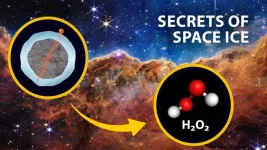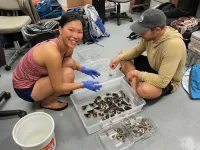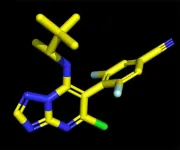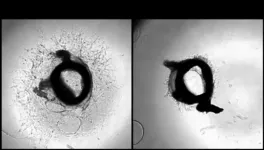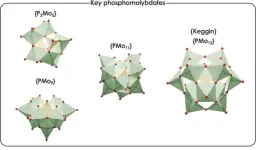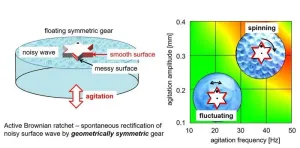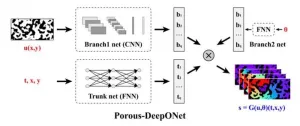Fossil hotspots in Africa obscure a more complete picture of human evolution
2024-08-20
(Press-News.org) WASHINGTON (August 20, 2024) – Much of the early human fossil record originates from just a few places in Africa, where favorable geological conditions have preserved a trove of fossils used by scientists to reconstruct the story of human evolution. One of these fossil hotspots is the eastern branch of the East African Rift System, home to important fossil sites such as Oldupai Gorge in Tanzania. Yet, the eastern branch of the rift system only accounts for 1% of the surface area of Africa—a fact that makes it possible to estimate how much information scientists who rely on such small samples are missing.
In a new study published today in the journal Nature Ecology & Evolution, researchers at the George Washington University show the extent to which the concentration of sites in hotspots like the East African Rift System biases our understanding of human evolution and why scientists must take that bias into account when interpreting early human history.
“Because the evidence of early human evolution comes from a small range of sites, it’s important to acknowledge that we don’t have a complete picture of what happened across the entire continent,” says W. Andrew Barr, an assistant professor of anthropology at GW and lead study author. “If we can point to the ways in which the fossil record is systematically biased and not a perfect representation of everything, then we can adjust our interpretations by taking this into account.”
To determine the size of the bias in the fossil record, Barr and his co-author Bernard Wood, University Professor of Human Origins at GW, looked at the distribution of modern mammals that currently live in the rift valley. They found that very few medium- and large-bodied mammals are “rift specialists,” and the rift environment, in fact, represents on average 1.6 % of the total geographic range of modern mammal species.
In a second analysis, Barr and Wood looked at how the skulls of modern primates collected in the rift valley compared with the skulls of the same primates from other parts of the continent. They found that skulls from the rift valley represented less than 50% of the total variation among primate skulls in Africa.
While the science community has long recognized that the rift represents just a small sample of where ancient humans likely lived, the researchers say previous studies have not used modern mammals as analogs for human fossils to try to quantify the magnitude of the bias. Information from modern mammals can’t tell us exactly where else, and in what type of environments, our human ancestors lived, but they can provide clues that help us better understand the environments and physical differences of ancient humans, say the authors.
“We must avoid falling into the trap of coming up with what looks like a comprehensive reconstruction of the human story, when we know we don’t have all of the relevant evidence” says Wood. “Imagine trying to capture the social and economic complexity of Washington D.C. if you only had access to information from one neighborhood. It helps if you can get a sense of how much information is missing.”
The researchers also note the need for the scientific community to look beyond the rift to identify new fossil sites and expand the geographic range of the fossil record.
“There’s a smaller number of people who work outside these traditional hotspots and do the thankless labor of trying to find fossils in these contexts that are really hard to work in, where the geology isn’t favorable for finding fossils,” says Barr, whose own work involves looking for fossils beyond the hotspots. “It’s worth doing that sort of work to make our picture of mammal and human evolution from this time period more complete.”
WATCH: Hear more from Barr on the significance of these findings in this video here.
The paper, “Spatial sampling bias influences our understanding of early hominin evolution in eastern Africa,” was published August 20, 2024 in Nature Ecology & Evolution.
-GW-
END
[Attachments] See images for this press release:
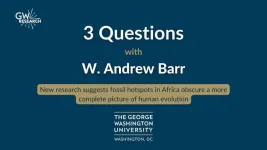
ELSE PRESS RELEASES FROM THIS DATE:
2024-08-20
DENVER, Aug. 20, 2024 — Who are we? Why are we here? As the Crosby, Stills, Nash & Young song suggests, we are stardust, the result of chemistry occurring throughout vast clouds of interstellar gas and dust. To better understand how that chemistry could create prebiotic molecules — the seeds of life on Earth and possibly elsewhere — researchers investigated the role of low-energy electrons created as cosmic radiation traverses through ice particles. Their findings may also inform medical and environmental applications on our home planet.
Undergraduate student Kennedy Barnes will present the team’s results at the fall meeting of the American ...
2024-08-20
Scientists are finding clues for how to treat diabetes and hormone disorders in an unexpected place: a toxin from one of the most venomous animals on the planet.
A multinational research team led by University of Utah scientists has identified a component within the venom of a deadly marine cone snail, the geography cone, that mimics a human hormone called somatostatin, which regulates the levels of blood sugar and various hormones in the body. The hormone-like toxin’s specific, long-lasting effects, which help the snail hunt its prey, could also help scientists design better ...
2024-08-20
We know that the Earth has an iron core surrounded by a mantle of silicate bedrock and water (oceans) on its surface. Science has used this simple planet model until today for investigating exoplanets – planets that orbit another star outside our solar system. “It is only in recent years that we have begun to realise that planets are more complex than we had thought,” says Caroline Dorn, Professor for Exoplanets at ETH Zurich.
Most of the exoplanets known today are located close to ...
2024-08-20
Platelets are circulating cell fragments known to clump up and form blood clots that stop bleeding in injured vessels. Cardiologists have long known that platelets can become “hyperreactive” to cause abnormal clotting that blocks arteries and contributes to heart attack, stroke, and poor blood flow (peripheral artery disease) in the legs of millions of Americans.
Despite this major contribution to cardiovascular risk, routine measurement of whether each patient’s platelets clump (aggregate) too much has been infeasible to date. ...
2024-08-20
Can research on diseases as diverse as, for example, diabetes, cardiovascular diseases, psychiatric disorders and endometriosis be linked? The answer is yes if the research focuses on collecting and analysing large amounts of data from both Danish and international registers and biobanks to learn more about, among other things, risk factors, relationships, patterns, treatment and consequences.
And this is exactly what a new international Pioneer Centre, The Pioneer Centre for SMARTbiomed (Statistical and Computational Methods for Advanced Research ...
2024-08-20
A multidisciplinary team of scientists led by Carlo Ballatore, Ph.D., at University of California San Diego and Kurt Brunden, Ph.D., at the University of Pennsylvania has been awarded a $6.9 million grant from the National Institute on Aging (NIA) to prepare a potential disease-modifying Alzheimer’s treatment for future clinical trials. In a recently published study about the new compound, called CNDR-51997, the team found it was effective in restoring brain health in mouse models of Alzheimer's disease. CNDR-51997 was identified through a joint drug discovery program at Penn and UC San Diego that was supported by grants from the NIA.
The ...
2024-08-20
Atherosclerosis, a major cause of mortality worldwide, involves an overgrowth of vascular smooth muscle cells in the blood vessels, constraining blood flow and potentially causing cardiovascular diseases. Against this backdrop, researchers from Shinshu University recently developed a DNA aptamer called iSN04 that targets and counteracts with the protein nucleolin in smooth muscle cells. This anti-nucleolin aptamer helps maintain smooth muscle cells in a differentiated state, offering new treatment potential for atherosclerosis and other vascular ...
2024-08-20
Researchers from the group of Prof. Carles Bo, at the Institute of Chemical Research of Catalonia (ICIQ-CERCA), have described a computational methodology that simulates complex processes involving different chemical species and diverse conditions. These processes lead to the formation of nanostructures called polyoxometalates (POMs), with important applications in catalysis, energy storage, biology and medicine.
"Our group has recently developed unique methods to study the chemistry of polyoxometalates in solution, their speciation and formation ...
2024-08-20
The ratchet mechanism is a fascinating energy-conversion system that converts disorderly or random motion into orderly, directed movement through a process known as spontaneous rectification. It is a critical component of mechanical systems, typically consisting of a gear and a pawl, which restricts the movement of the gear in one direction. In biological systems, the concept of a Brownian ratchet has been proposed to help understand the mechanism of molecular motors, where chemical reactions rectify the random thermal motion of molecules.
According to the second law of thermodynamics, uniform thermal ...
2024-08-20
Porous media play a critical role in various industrial fields due to their complex pore networks and considerable specific surface areas. The transport and reaction phenomena within porous media are key factors influencing fundamental parameters such as energy storage efficiency, catalytic performance, and adsorption rates. To accurately describe these complex transport and reaction processes, solving parameterized partial differential equations (PDEs) is necessary. However, due to the complex structure of porous media, traditional methods, such as the finite element method ...
LAST 30 PRESS RELEASES:
[Press-News.org] Fossil hotspots in Africa obscure a more complete picture of human evolution

